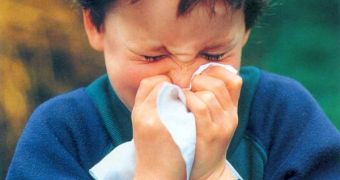It's common knowledge that people have different pain thresholds. It's still unclear why this happens between persons that were born and raised in similar environments. There are, of course, no ways to draw parallels between aborigines in Papua New Guinea and Hollywood residents, in terms of how much pain each of them can endure. Recently, Canadian researchers set out to discover exactly how these pain differences manifest themselves.
During the study, 20 men and 20 women were "equipped" with pain stimulants – heating devices attached directly to their legs. The subjects had a button in their hands, which they could press whenever the pain became too great. At the same time, the scientists behind this survey filmed each person's face, so as to be able to measure the reaction each of them had to the stimuli.
Study author Miriam Kunz, University of Montreal postdoctoral student, said that "Individuals who react to pain with intense facial expressions are in fact feeling more pain if we rely on quantitative verbal measures independent of the painful experience. All test subjects with an intense facial reaction to pain estimated that the sensation was "moderately painful" between 45 and 47 degrees Celsius, while others had a higher threshold."
Some of the test subjects reported low discomfort at these temperatures, hinting at the fact that their pain receptors were working differently than those other people had. They also exhibited less signs of facial muscle twitching and less obvious overall signs of pain. Scientists are yet unsure as to how exactly the same amount of stimuli can trigger so different responses in subjects.
One explanation for this could be that societal factors, such as the culture, gender, age and education, may contribute to the way individuals feel pain to a great extent. Children who were cuddled all the time while growing up could become pain-fearing adults, while those who had a "restless" childhood could become persons with a much higher pain threshold.

 14 DAY TRIAL //
14 DAY TRIAL //